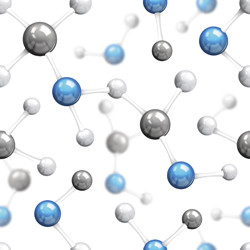Superfluidity in ultracold gas mixtures
Atomic and molecular motion increases with increasing temperature. Conversely, at ultracold temperatures, motion nearly ceases. Events can become highly correlated. Atoms seem to merge together and lose their individual identities, behaving less like particles and more like matter waves. They can form very exotic new states of quantum matter such as superfluids or superconductors. The EU-funded project ATOMIC MIXTURES explored fundamental questions about mixtures of atomic gases. These questions can best be answered when the mixtures are cooled to ultracold temperatures, where quantum mechanical effects dominate. Scientists studied interactions in these strongly correlated quantum many-body systems with an emphasis on superfluids and supersolid-like phases. Researchers studied Fermi-Fermi mixtures and Bose-Bose mixtures. They also investigated light atom – heavy atom mixtures and gases of heteronuclear molecules (having more than one type of atom, unlike e.g. molecular hydrogen, H2). One of the characteristics that differentiate gases is their ground state(s) or lowest energy state(s) and the ground-state phase diagram provided important insight. The ground-state phase diagram of spin-orbit coupled uniform Fermi gases showed that spin-orbit coupling can give rise to exotic superfluid phases with potential relevance to fault-tolerant quantum computing. One of the most significant results showed that, as the nearest-neighbour interaction becomes strong enough, the supersolid phase becomes much larger than usual. The predictions were recently confirmed with numerically-exact Quantum Monte Carlo simulations, pointing the way to a promising route for obtaining a supersolid phase for the first time. Studies of the ground-state phase diagram of two-species gases with paired particles demonstrated an exotic twisted superfluid phase never seen before. Finally, work on ultracold fermion superfluids in the presence of magnetic fields demonstrated new insight into superfluid phase transitions. Progress was impressive, leading to 18 publications in high-impact peer-reviewed scientific journals as well as two publications in the coordinating university's magazines. Recently, ultracold gases have witnessed an explosion of research activity as an ideal test bed for quantum phenomena. ATOMIC MIXTURES has made a major contribution to a field that is providing a whole new window to the world.




